No products in the cart.
NEWS
May Planting Guide: Top Vegetables & Herbs for Your Garden
As spring fully awakens and the days stretch longer and warmer, May transforms into a prime time for active gardening across many regions. The precise timing of your planting depends heavily on your local climate and the specific vegetables you plan to grow, especially concerning the last frost date. Whether you prefer the satisfaction of nurturing plants from tiny seeds or the convenience of setting out robust young transplants, May offers abundant opportunities to get your hands dirty and set the stage for a bountiful harvest. This guide will explore the best options for both transplanting established seedlings and direct sowing seeds into the soil, helping you make the most of this crucial gardening month.
Successfully planting in May often involves navigating the transition from cooler spring temperatures to the warmer days of early summer. For some crops, this means starting indoors to get a head start, while others thrive when sown directly into the warming soil. Understanding your region’s typical weather patterns, particularly the timing of the last expected frost, is fundamental to making the right planting decisions for each type of vegetable or herb.
Vegetables to Transplant in May
For many garden favorites, especially those sensitive to cold or that require a longer growing season, May is the ideal time to move seedlings that were started indoors out into the garden. This process, known as transplanting, gives plants a head start and allows them to establish a strong root system before the peak heat of summer arrives.
Before planting any seedlings outside, it’s crucial to “harden them off.” This process gradually acclimates young plants to outdoor conditions like sun, wind, and temperature fluctuations, preventing shock. Start by placing seedlings in a sheltered spot outdoors for a few hours each day, gradually increasing the time and exposure over a week or two until they can stay outside overnight before being permanently planted in their final garden location.
The following vegetables are excellent candidates for transplanting in May, whether they were grown from seed indoors or purchased as young plants from a nursery.
Cabbage
A versatile and rewarding crop, cabbage is best transplanted into the garden in May in most climates. These brassicas prefer cooler weather, so getting them established now allows them to develop strong heads before temperatures soar. While some cooler climates might still allow for direct sowing early in the month, transplanting ensures a good start. Consider a second planting in late summer for a fall harvest.
Snow Peas
These delightful cool-season legumes thrive in the milder temperatures of spring. Transplanting snow pea seedlings in May ensures they will mature and produce pods before the summer heat arrives, which can cause them to stop producing. Provide a trellis or support system from the start, as snow peas are natural climbers and will benefit from something to grow up on as they develop. Gently guide young tendrils onto the support as they grow.
Corn
For those dreaming of tall stalks laden with sweet corn, May is the critical month for transplanting corn seedlings. Corn is a heavy feeder, requiring nutrient-rich soil, particularly nitrogen, to grow vigorously. Ensure your planting site is well-amended with compost or organic fertilizer before setting out seedlings. If there’s a risk of unexpected cold nights, consider using protective covers or mulching heavily around the base of the young plants to retain soil warmth.
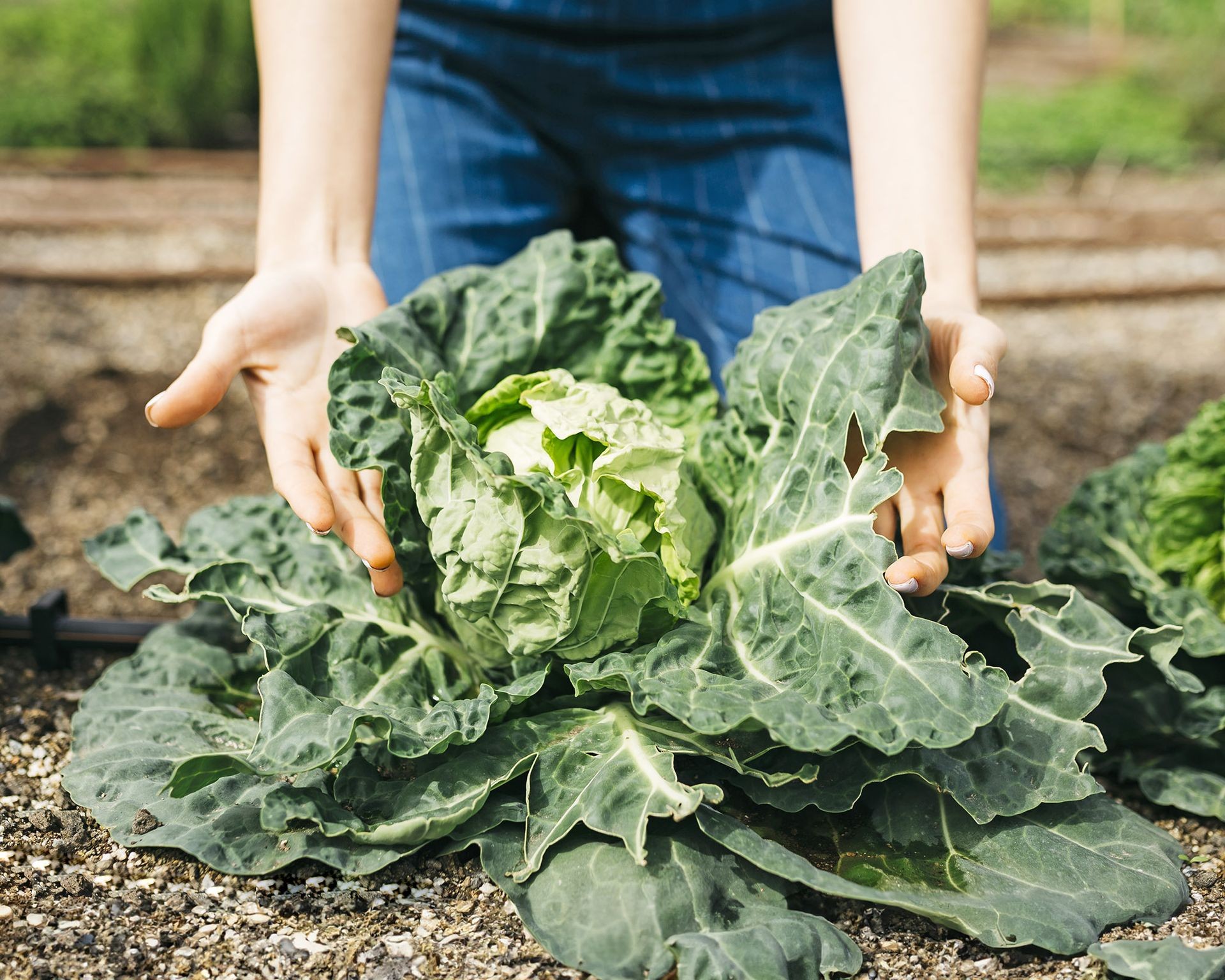 Gardener inspecting vibrant green cabbage head in a home vegetable garden.
Gardener inspecting vibrant green cabbage head in a home vegetable garden.
Zucchini & Summer Squash
May marks the optimal window for transplanting zucchini and other summer squash varieties. These prolific plants grow quickly and require ample space to spread out. Once established, they produce abundantly, often requiring daily checking for ripe fruits to prevent them from becoming oversized. Provide young transplants with plenty of room to ensure good air circulation and growth.
Cucumbers
While cucumbers appreciate warmth, May is generally warm enough in many regions to successfully transplant seedlings. Select cucumber varieties suited to your garden space – bush types are compact and don’t need support, while vining types can grow quite large and require trellising or caging. Ensuring warm soil temperatures after the last frost is key for healthy cucumber growth.
Nightshades (Tomatoes, Eggplants, Peppers)
Perhaps the most anticipated transplants of the season, tomatoes, eggplants, and peppers are sensitive to cold and must wait until the danger of the last frost has completely passed. For many areas, this date falls sometime in May, making mid to late May the ideal time to transplant these warmth-loving crops into the garden. Always check your local last frost date before planting.
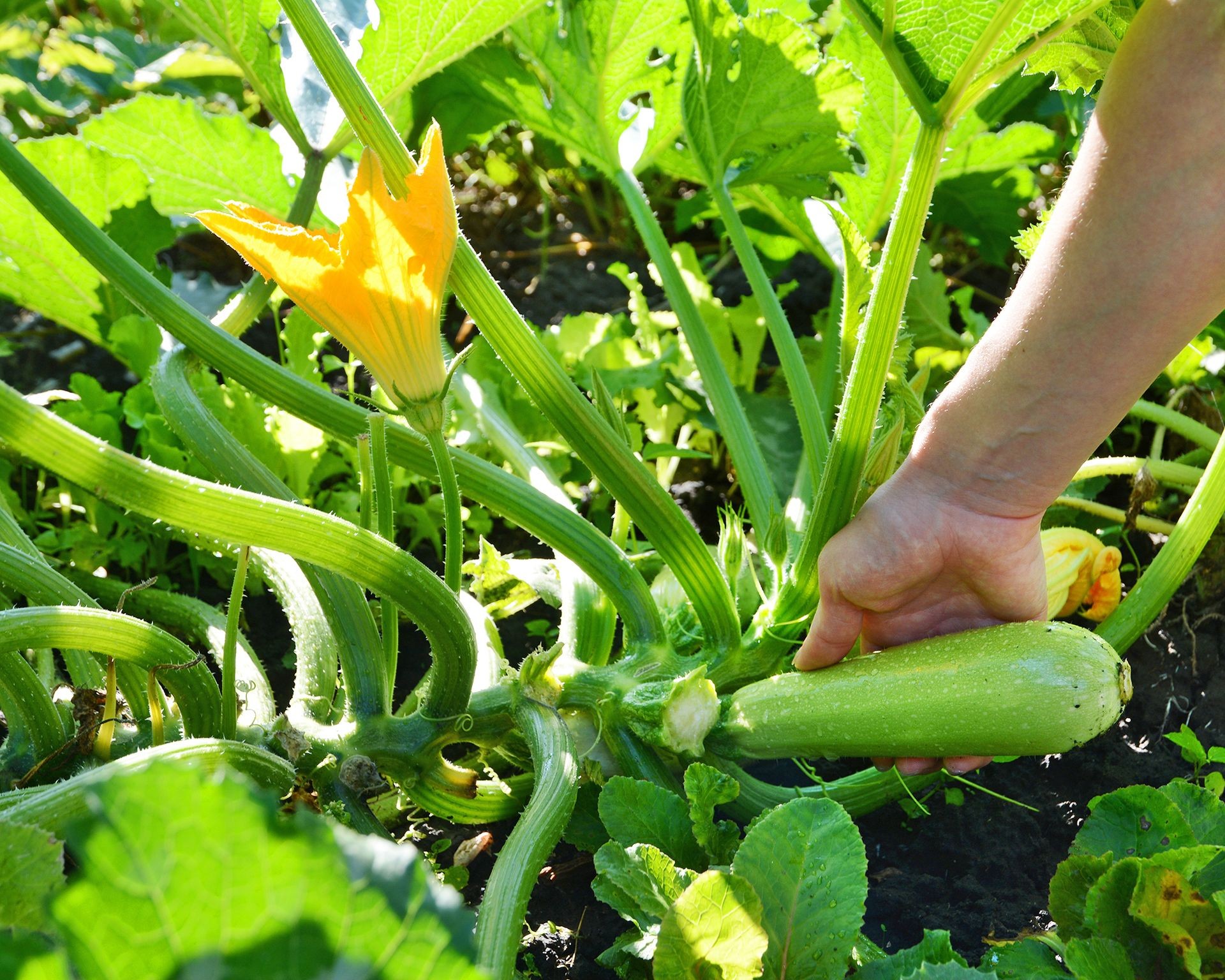 Feeling a developing zucchini on the vine to check for ripeness.
Feeling a developing zucchini on the vine to check for ripeness.
Broccoli & Cauliflower
While often considered cool-season crops, selecting later-season or bolt-resistant varieties of broccoli and cauliflower allows for successful May transplanting. Getting established plants into the ground now means you can often harvest a crop or two before the heat of summer encourages them to bolt (go to seed). Provide some protection from intense midday sun in hotter climates and monitor for common pests like aphids.
Herbs
May is the perfect time to set out transplants of your favorite culinary herbs. Basil, cilantro, sage, mint, and many others will thrive in the warming weather. Ensure they have been hardened off before planting. Once in the ground, they will quickly grow, providing you with fresh clippings for seasoning your homegrown vegetables as they mature throughout the season.
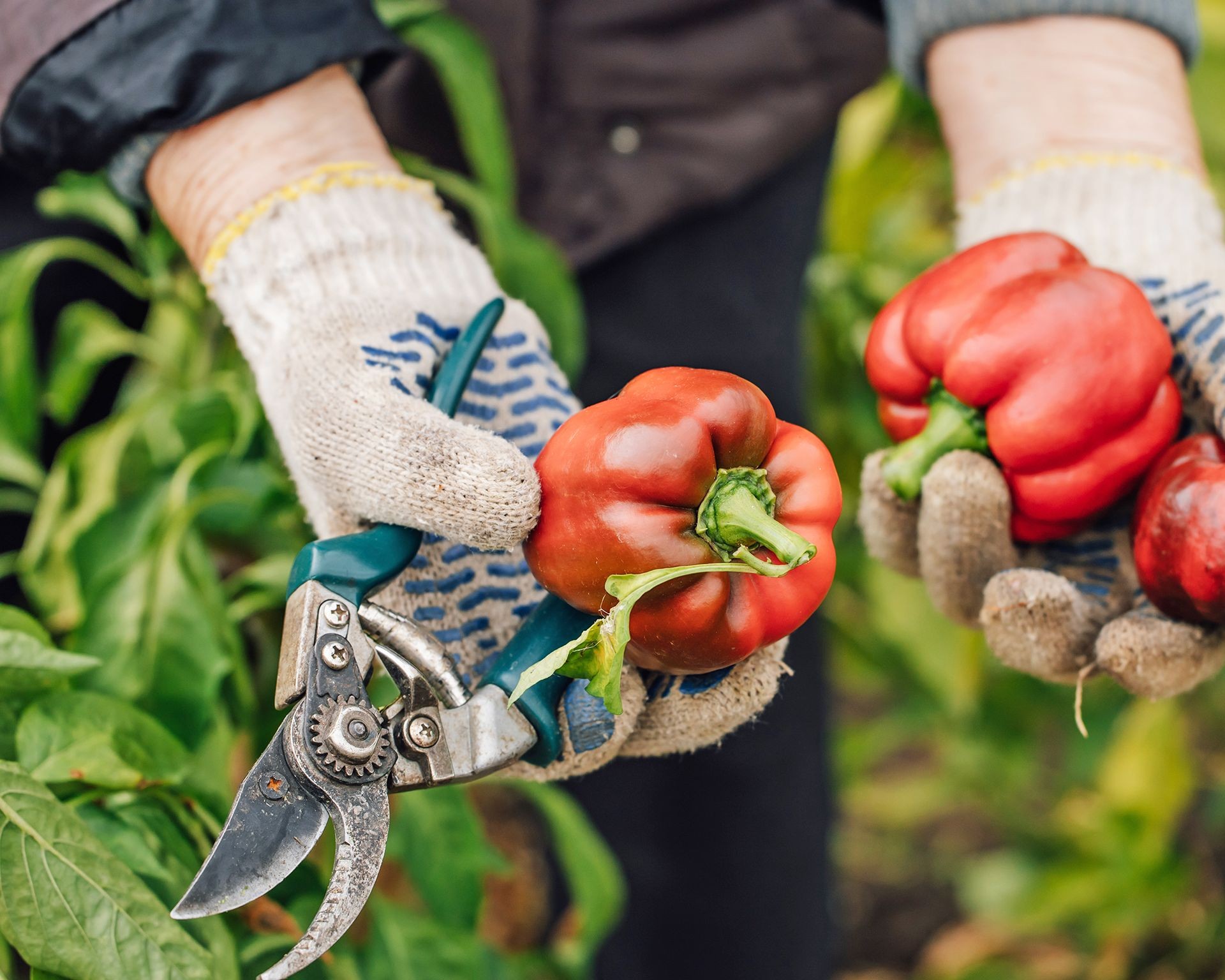 Close-up of hand harvesting ripe red bell peppers from a plant using pruning shears.
Close-up of hand harvesting ripe red bell peppers from a plant using pruning shears.
Vegetable Seeds to Direct Sow in May
Direct sowing involves planting seeds directly into the garden soil where the plants will grow to maturity. May’s warming soil temperatures make it suitable for direct sowing a wide range of crops, including many root vegetables and some faster-growing plants that can tolerate or finish their life cycle before intense summer heat.
In warmer climates with early springs, crops like tomatoes and peppers might even be direct sown, but in most temperate regions, May direct sowing is best suited for cool-season crops (if planted early enough to mature before heat) and warmer-season crops that germinate quickly in warm soil. If you didn’t start certain warmth-loving plants like cucumbers indoors, May is still a good time to direct sow them, although your harvest will come later in the season.
Here are some excellent vegetables to plant directly from seed into your garden beds during May.
Lettuce
Many varieties of lettuce are perfect for direct sowing in May. Leaf lettuce, romaine, and butterhead types can be sown in succession every few weeks for a continuous harvest. Choose heat-tolerant varieties if planting late in the month or in warmer zones. Sow seeds in a location that receives some afternoon shade, especially in hotter climates, to help prevent bolting. A diverse mix of lettuce seeds can offer a variety of textures and flavors for your salads.
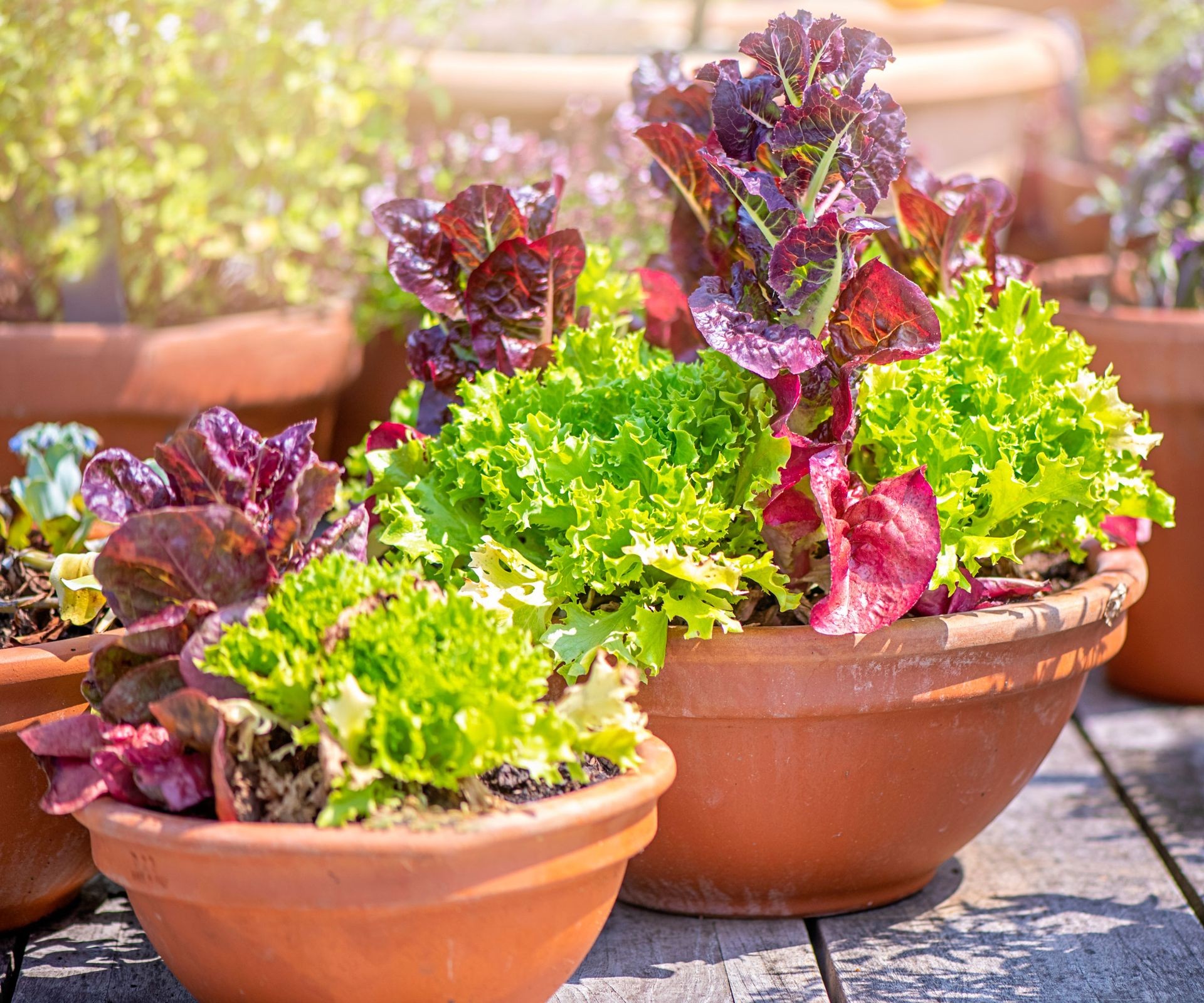 Healthy leaf lettuce plants growing in large outdoor containers, ready for harvest.
Healthy leaf lettuce plants growing in large outdoor containers, ready for harvest.
Beets
Easy to grow and relatively tolerant of cooler soil, beets are ideal for direct sowing in May. They can even handle a light frost, making them a reliable choice for many northern gardens. Beets offer diversity in color and shape depending on the variety. Sow seeds directly into well-prepared soil and thin seedlings to allow the roots space to develop. You could be enjoying fresh beet greens or roots in as little as 50-60 days.
Carrots
Similar to beets, carrots are best sown directly into the soil. May is a great time to get your first planting of carrots in, and you can continue succession sowing every few weeks into early summer for a steady supply. Carrot seeds are tiny, so mixing them with sand can help with even distribution. Once seedlings emerge, thinning is essential to give the roots room to grow straight and large. Ensure the soil is loose and free of rocks for the best results.
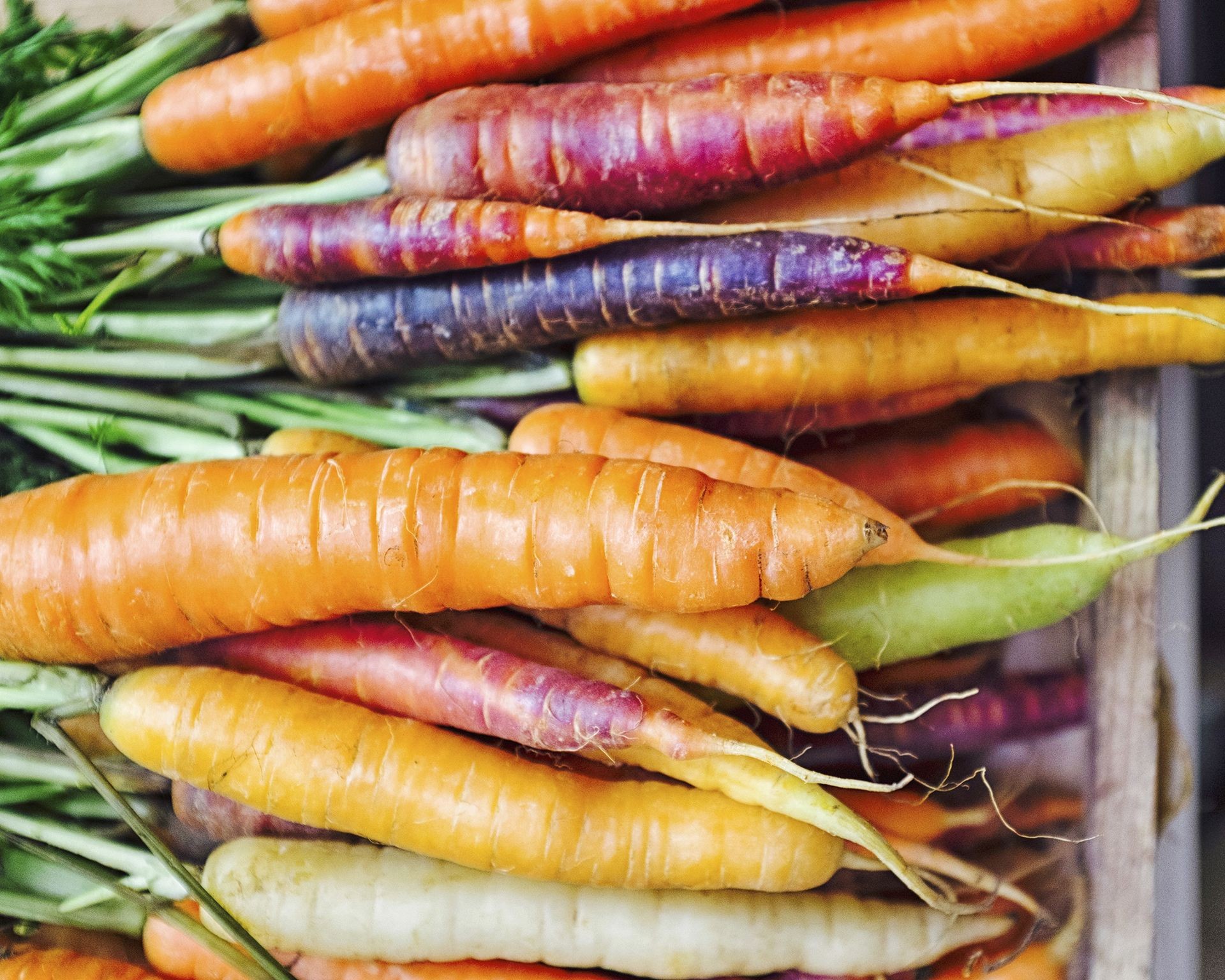 Assortment of freshly harvested multi-colored carrots displayed in a wooden crate.
Assortment of freshly harvested multi-colored carrots displayed in a wooden crate.
Pumpkins & Winter Squash
These large, rambling plants need warm soil to germinate successfully. May is the recommended time to direct sow seeds for pumpkins and hard-shelled winter squash varieties like butternut or acorn squash. Ensure the soil temperature is consistently above 55°F (13°C) before planting. Provide plenty of space in your garden, as these plants can spread significantly.
Potatoes
May is often the last call for planting seed potatoes, especially for early and mid-season varieties. Plant seed potatoes in prepared, loose soil about two weeks before your average last frost date. Hilling the soil around the developing plants as they grow will protect the tubers from sunlight and increase yield.
Radishes
These fast-maturing root vegetables can be direct sown throughout much of the growing season, but May planting is often ideal before intense heat causes them to become overly spicy or woody. Radishes come in various colors, shapes, and flavors. Because they mature so quickly (some in under a month), they are a great choice for impatient gardeners or for filling small gaps in the garden.
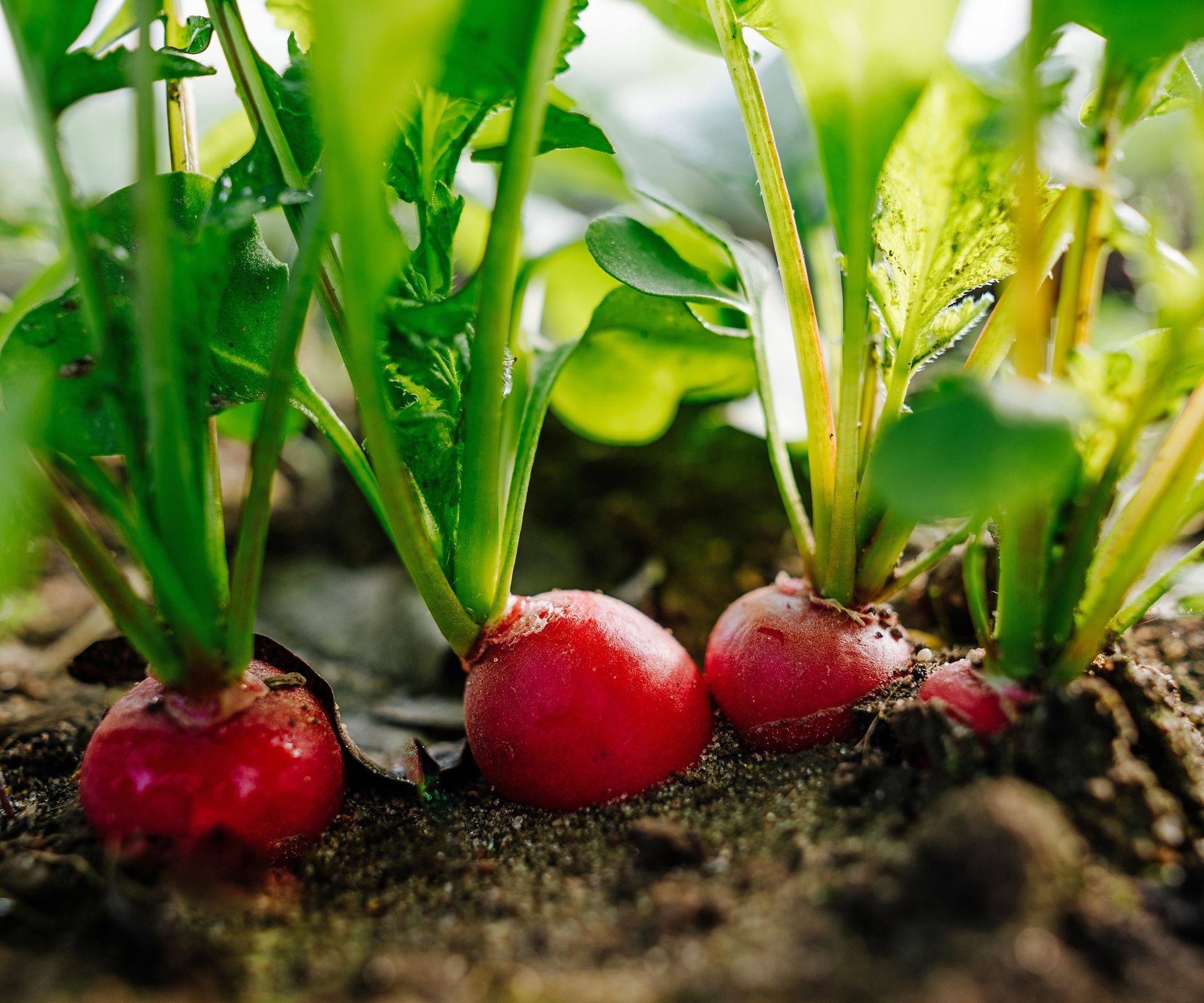 Freshly grown red radishes visible just below the soil surface in a garden bed.
Freshly grown red radishes visible just below the soil surface in a garden bed.
Melons
For a sweet summer treat, direct sow melon seeds (like watermelon, cantaloupe, or honeydew) after the danger of the last frost has passed, typically in May. Choose varieties suited to your climate’s growing season length. Melons are heavy feeders and require warm, well-drained soil rich in organic matter. Ensure the soil temperature is warm enough for germination.
Essential Tips for Successful May Gardening
Beyond choosing what to plant, how you prepare and care for your garden in May makes a significant difference.
Know Your Soil: Before planting, assess your soil health. Test your soil’s drainage by digging a 1×1 foot (30cm x 30cm) hole, filling it with water, letting it drain, and filling it again. Time how long the second filling takes to drain. Good drainage means it drains at about 1 inch (2.5cm) per hour. If drainage is poor, incorporate ample organic matter like compost. Compost not only improves drainage but also slowly releases essential nutrients, creating a healthier environment for root growth. Testing your soil pH and nutrient levels can also provide valuable insights into what amendments your garden might need.
Consider Your Needs: Think about how much you and your family will actually eat. For crops like tomatoes and peppers that produce continuously, 1-2 plants per person is often sufficient. For crops that store well or are harvested all at once, like potatoes or carrots, you might want 5-10 plants per person or more if you plan on preserving them. Ultimately, plant more of the vegetables your household enjoys most.
Watering and Fertilizing: May weather can be unpredictable. Be prepared to water consistently, especially for newly transplanted seedlings and germinating seeds. As plants grow, consider appropriate fertilization, leaning towards organic options that support long-term soil health.
Cultivate Your May Garden Success
May presents a vibrant opportunity to fill your garden with the promise of future harvests. By understanding the needs of different plants and paying attention to your local conditions, you can make informed decisions about what to transplant and what to direct sow. From sturdy brassicas and climbing peas to warmth-loving squash and essential root crops, there’s a wide array of choices to make your May garden productive and exciting.
Starting your garden journey or expanding your existing beds is a rewarding experience. With the right planning and care, the plants you put in the ground this month will provide delicious, fresh food in the weeks and months to come. Explore the possibilities and get planting! For quality seeds and garden supplies to support your growing efforts, consider the range of products available at Biogarden.asia. Happy gardening!



